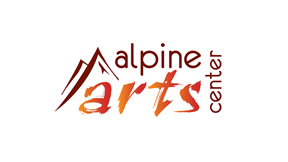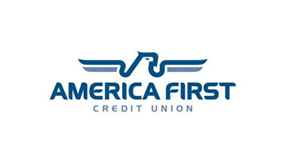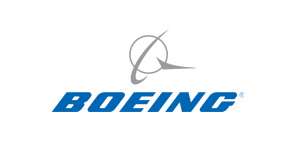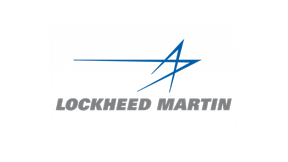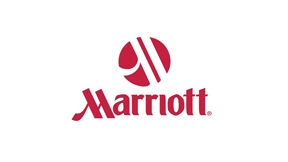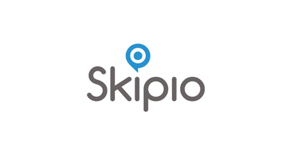
Are you planning to tint or coat your windows sometime in the near future? If so, then you may encounter some terms that could be confusing. The window tinting and window coating business is full of technical terms that can leave homeowners feeling intimidated. Now is the time to familiarize yourself with these terms. Here’s what you need to know.
Window Film Terminology for Commercial and Residential Applications
Blast Mitigation Film: Minimizes the damage caused by flying debris and reduces the impact of a pressure blast incident including sound waves and shock wave pressures.
Clear Dry Adhesive (CDA): An adhesive that uses water to form a chemical bond between the mounted film and the glass surface. CDA offers a strong, clear bond that has a long life cycle.
Curing (Drying) Time: The amount of time during an installation that it takes for all adhesives and application fluids to evaporate and reach maximum bonding strength.
Daylight Installation: A process used to install safety film and solar film. The window film is precut to be slightly larger than the framed window, then trimmed to fit the glass edge.
Emissivity (E): A measurement used to describe the ability of a surface to absorb or reflect radiant energy. A Low-E window film rating will reduce the loss the interior heat through glass panes.
Emissivity: Emissivity refers to the heat from the sun that is reflected or absorbed by the tinting.
Fenestration: The engineering and design that optimizes the placement, proportion, and sizes of all exterior windows and doors.
Fragment Retention Film: A laminated window film product for safety & security windows used to keep glass panes intact when shattered or broken.
Glare Reduction (GR): An anti-glare property in film and windows that allows sunlight to pass while reducing a significant amount of glare.
Glazing: The windowpane or glass panel installed within a window frame.
G-Value: This refers to the solar heat that makes it into the home. This number depends on how well the window coating can absorb solar heat.
Infrared (IR) Rejection: The range of wavelengths not transmitted through a window resulting in a reduced amount of solar radiation and less interior heating from the sun.
Low-Emissivity: A Low-E coating on a glass pane will reduce heat loss and provide better insulation characteristics.
Mechanical Attachment System: A metal system used to anchor safety film to the window frame.
Metalized: An even layer of metal applied to clear, plastic film to produce color variations and increase the window system’s performance.
MIL: A unit of measurement of the thickness of window film where 1/1000 of an inch (.001”) = 1 mil.
MYLAR: A polyester film produced by DuPont used for anti-shatter and blast mitigation applications.
NIRB: Near Infra-Red Blocking.
PLY: The number of separate layers laminated together during the manufacturing of polyester film.
Pressure Sensitive Adhesive (PSA): A mounting adhesive that uses pressures to create a mechanical bond between the glass and film.
Shading Coefficient (SC): A ratio between the amount of solar heat gain passed through a window system and the amount passed through an unshaded, double-strength glass. The lower SC number indicates better shading efficiency.
Solar Absorbtance: The percentage of the total solar energy that is absorbed by the window system.
Solar Energy: All the wavelengths of energy from the sun, including infrared radiation (heat), visible light (glare), and ultraviolet radiation (fades materials and can affect health).
Solar Energy Absorbed: The ratio between the amount of solar energy absorbed by a window system to the amount of solar energy falling on that window system.
Solar Energy Reflected: The ratio between the amount of solar energy directly reflected by the window system to the amount of solar energy falling on that window system.
Solar Energy Transmitted: The ratio between the total solar energy passing through a window system to the amount of total solar energy falling on that window system.
Solar Heat Gain Coefficient (SHGC): The percentage of solar energy that is directly absorbed and released into a building. A lower SHGC number will exhibit better solar control.
Solar Heat Reduction (SHR): A system that can reduce the solar energy gained within a building using solar control window film.
Solar Reflectance (R): The percentage of total solar energy (including visible, infrared and ultraviolet light) that is reflected by a window system. A film with a high R rating will provide maximum heat rejection.
Solar Transmittance (T): The percentage of solar energy (visible, infrared and ultraviolet) that passes through a window system (excluding the solar energy that is reflected or absorbed by the window film).
Sputtering: The process of embedding metal particles such as copper, silver, chromium, gold, or stainless steel onto polyester film. Sputter-coated windows have long-lasting color and excellent solar performance.
Total Solar Energy Rejected (TSER): The amount of solar energy that is rejected in a window film. The higher the TSER number, the better the films reject solar energy away from the window.
Total Solar Energy Rejected: This is the energy that is kept out of the home. This number is a percentage, the higher the better.
U-Value: A number that represents the amount of heat transfer through film. The lower the U-value is desirable for heat management.
Ultraviolet Light (UV): The powerful, but invisible wavelengths emitted by the sun including UV-A, UV-B, and UV-C. UV-B may cause sunburn or lead to skin cancer. The best window films will block nearly 100% of ultraviolet light from passing through a window system.
Ultraviolet Rejected (UVR): The ratio of ultraviolet solar energy (wavelengths between 300 – 380nm) that is allowed by a window system to the total solar ultraviolet energy falling on the window system.
U-Factor: The U-Factor is essentially the insulation that the window affords. Lower numbers correspond to better insulation.
Ultra Violet (UV) block: UV block refers to the amount of UV radiation that the window coating will block. This is expressed as a percentage.
Ultra Violate (UV) rays: UV rays are a type of radiation that can damage the skin and furniture. UV rays can cause cancer. UV rays are divided into three categories: UVA, UVB, and UVC.
Vacuum Metallizing: The depositing of evaporated metal, alloy, or other compounds onto window film while in a vacuum.
Visible Light Absorbance (VLA): The percentage of visible light absorbed by a window system
Visible Light Reflected (VLR): The percentage of visible light reflected by the window system. A higher VLR rating will offer better glare control, and these window films tend to be more reflective and/or darker.
Visible Light Transmitted (VLT): The percentage of visible light (daylight) that travels through the window system. Clear glass, without window film on it, has an approximate VLT of 89%.
Visible Light Reflected (VLR): This is the amount of light that the window reflects back into the world. This is usually expressed as a percentage.
Visible Light Transmitted (VLT): This term refers to the amount of light that passes through a window that can actually be seen. This is usually expressed as a percentage.
Wet Glaze Attachment System: A method used to retain glass that secures the safety film to the window frame with a sealant or silicone adhesive that is similar to caulking.
Work With Your Window Film Installation Professional
Window coating is a topic that many homeowners know little about. If you’re not familiar with window coating or how it works, have a conversation with a window coating professional in your area. Your window coating professionals can answer your questions and provide you with a quote for services that can help you make an informed decision as a consumer.
Representatives from Glamour Glaze are trained to keep customers informed. We provide resources like the glossary above and also answer questions that help ensure that our customers go into their purchase with eyes wide open.
Want to Learn More About Window Film? Contact Glamour Glaze Window Tinting Today
Old windows with unglazed glass can heat up your home, cause high utility bills and fade your upholstery. The longer you live with unglazed glass, the more expensive the repairs to your home are likely to be. At Glamour Glaze, we provide professional glazing services to homeowners seeking to improve their home’s value and energy efficiency. You don’t have to buy all new windows to make your windows more efficient! Our glazing techniques can deflect UV rays that can warm your home and damage your furniture.
As the winners of the Salt Lake City Best of Windows Award in 2013, we offer excellent customer service and a quality product at affordable prices. We’ve been in business for over 30 years! To get started with your window film consultation and installation, call us today at 801-776-8468.

